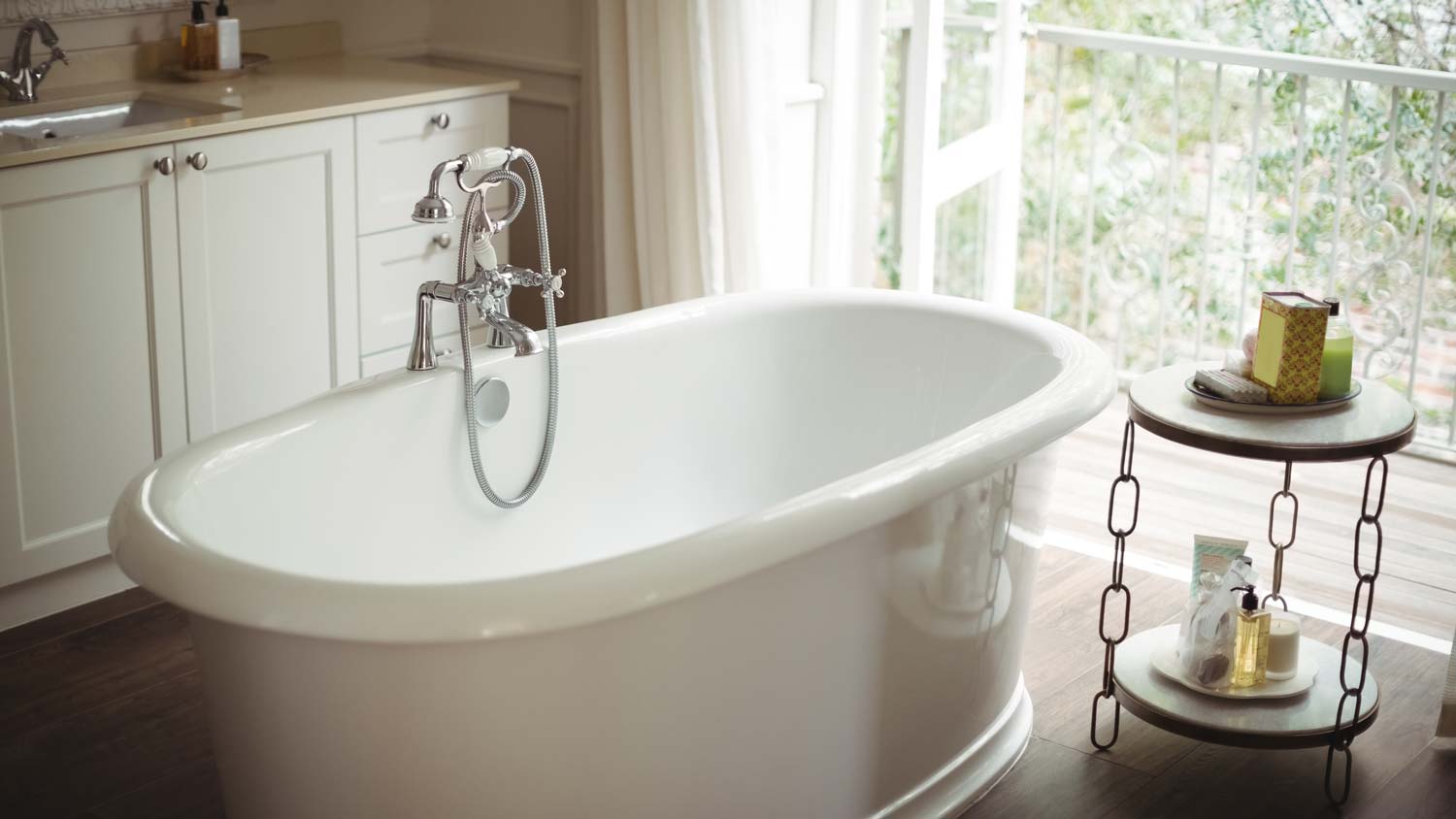
Do you want to add a mudroom to your home but are unsure if it’s within your budget? Use this mudroom addition cost guide to determine your installation price range.
Update your builder-grade bathroom mirror with minimal damage to your wall


If you’re looking to update the look of your bathroom, a great place to start is with a new bathroom mirror. That project might hit a speedbump, though, when you realize your current mirror is glued to the wall and needs to come off before you can get started. Learn how to remove a bathroom mirror safely and effectively so you can start your journey to a bathroom you really love.
Removing your bathroom mirror is best accomplished as a two-person project. While it might be possible to do it on your own with a small mirror, you run a higher risk of safety issues like broken glass, pinched fingers, and difficulty balancing a heavy mirror.
When you remove a mirror that’s adhered to the wall, there is a chance that the mirror will break as you’re handling it, so make sure to wear the appropriate safety gear, including safety glasses and thick work gloves. Before you get started, cover the countertop and sink area with a drop cloth.

Safety is of the utmost importance, and custom mirrors can be costly, so you’ll want to take every precaution you can. Because of the possibility of broken glass, you’ll need to tape off the mirror to keep as much glass intact as possible and prevent it from falling and potentially injuring you.
Using long strips of thick tape—such as duct tape, packing tape, or masking tape—tape the perimeter of the mirror, across the mirror vertically and horizontally (make multiple tape lines for larger mirrors), and diagonally from corner to corner.
If your mirror is affixed to the wall with a combination of adhesive and clips, remove the clips with a screwdriver.

Starting in one of the top corners of the mirror, use your hair dryer or heat gun to heat the mirror and the adhesive behind it. Heat one small section at a time until the adhesive loosens enough that you’re able to easily pull it away from the wall. Have your helper hold on to the mirror from this point on as you work to ensure it doesn’t suddenly drop or fall.
You may be able to pull the mirror away from the wall using only heat and your hands. If the adhesive is loosening up enough for you to separate the mirror from the wall, work slowly and carefully until the entire mirror is free from the wall. If not, try one of the following methods.
If you can’t get the mirror to budge using just heat, once you’ve heated the mirror, take a length of wire—like piano or guitar wire—longer than the width of the mirror and slip it between the mirror and the wall, using a back-and-forth sawing motion to cut through the softened adhesive until the mirror is released from the wall.
For particularly stubborn adhesive, you may have to use a little more force to get the mirror away from the wall. Please note that this method increases the likelihood of breaking the mirror as well as damage to your drywall.
Once you’ve heated the mirror’s adhesive, insert wooden shims every 6 inches or so around the perimeter of the mirror between the mirror and the wall. Use your pry bar or crowbar to gently pry between the shim and the wall, working carefully and methodically around the mirror until it comes loose.

Once your mirror is off the wall, use the heat gun or hair dryer to loosen any remaining adhesive and scrape it away with a putty knife.

If your mirror has broken or cracked during the process, carefully put the pieces into a cardboard box or several heavy-duty contractor’s bags to avoid injury from glass shards. If the glass has remained intact and you’re planning to repurpose it, store it in between two sheets of cardboard so as not to accidentally damage it.
If removing your glued-on bathroom mirror is too big of a project for you to manage on your own, hiring a handyperson might be a good option. A handyperson typically charges between $60 and $125 per hour for tasks like this. The cost of removing a larger mirror professionally averages $500. If you’re looking for a more involved update for your bathroom, a local bathroom remodeler can execute a larger bathroom project for you.
From average costs to expert advice, get all the answers you need to get your job done.

Do you want to add a mudroom to your home but are unsure if it’s within your budget? Use this mudroom addition cost guide to determine your installation price range.

Tiling a shower is an investment in the look and function of your home. This guide explains the factors behind the cost to tile a shower.

Bathroom cabinet costs can easily skyrocket. Take a look at these important cost factors and considerations to help you stay within your budget.

Make choosing your toilet seat a cinch using this guide. Learn about different toilet seat types, shapes, materials, and features.

Knowing how to install a shower requires some skill and experience, but a shower enclosure installation is a doable DIY project if you follow some basic steps.

An updated bathtub can give a bathroom a whole new look. Find out how much it costs to replace a bathtub in Dallas, TX, including prices by type and labor costs.